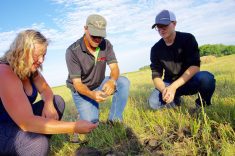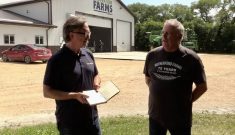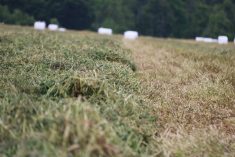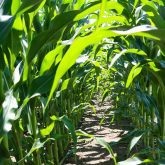Glacier FarmMedia – Conventional grain farmers have chemical tools to manage weeds post-harvest, but for certified organic producers like Ward Middleton, options are limited.
“We don’t really have a sledgehammer-type problem-solving option to control weeds, so we have to use many little hammers,” said Middleton, quoting weed ecologist Eric Gallandt, who coined the phrase at the 2012 Canadian Organic Science Conference.
Why it matters: Conserving moisture and controlling weeds organically can be at loggerheads if rain is sparse.
Read Also

Land agreement inked for Cereals Canada GATE facility
James Richardson & Sons, Limited will provide land for the Global Agriculture Technology Exchange (GATE) building in Winnipeg, according to memorandum of understanding with Cereals Canada
In the fall, those “little hammers” include tillage, grazing and cover crops. Collectively, the goal is to find the right mix that will protect moisture reserves and boost soil health.
“We try to be as judicious as possible in deciding on the tool that will give us the best balance between the control we’re looking for and the least amount of disruption to the soil,” said Middleton from his mixed organic farm north of Edmonton.
Grazing weed-intensive areas is a big part of Middleton’s post-harvest weed management. What goes into the cow is supplemented by cutting perennials off at the top and trampling weed- or perennial-heavy areas.
“Anything that is still green and growing, the cattle will graze off,” he said. “You have to do anything you can do to deplete the reserves that perennial plant uses to carry itself through the winter to survive.”
Middleton sets up his fall weed management at harvest by using a chaff catcher on his harvester. There may still be weed seed in that chaff that he doesn’t want to disperse, so he has an unusual solution.
The farmer runs chaff through a blower and dust collector, dropping it “on top of the straw swath as though we’re going to bale it…Instead of the chaff first being spread on the ground before the straw falls on the ground, we instead drop the straw first and then put the chaff on top of the 12-inch row.”
The straw and chaff mixture is then picked up and used as bedding for the cattle or left in the swath for the cows to eat.
“We use that as low-grade swath grazing. The cows go in, they clean up whatever else is growing in the field and we essentially control the rate at which they graze across the field.”
It’s a win-win. Middleton gets weed control and the cattle get extended grazing.
Middleton thinks of the process in terms of regenerative agriculture. That philosophy includes livestock integration as one of its pillars.
“By putting cattle out on the land, not only do we get a revenue from the grazing of the cattle but they are also helping us deplete the carbohydrate or energy reserves of perennials. And they’re also getting food value from some of what might be the weed seed bank that is in that chaff.”
Tillage
The need for tillage is often considered a weakness of organic systems. However, the use of organic inputs, cover crops and perennial forages tend to cancel out the negative effects of the practice, in Middleton’s view.
He argues that tillage can be used post-harvest to stimulate weed seed germination. These weeds will freeze and be killed by winter, leaving more space and resources for crops in the spring.
Moisture preservation is an ongoing battle for farmers this year, and an issue often raised as an organic challenge in drought years.
Middleton isn’t concerned, despite the critical drought that has gripped parts of his province. His areas usually gets enough snow cover to recharge moisture, he said.
Cover crops
Cover crops provide competition for weeds in the organic farming model and bring in soil nutrients.
At the same time, the short Prairie growing season has been a historical challenge for the practice, compared to areas of the U.S., where a post-harvest cover has more time to grow and do its job.
“What we find is that if there’s going to be a full cover crop, it is most likely either a very cost-effective seed, like an annual that’s going to die [in winter] or you’re doing it behind an early-harvested crop, something that silaged off or it was a winter cereal that was harvested in early August and you’ve got a length of time,” Middleton said.
If a producer wants a fall cover crop that lives through the winter, typical choices include fall rye, triticale or winter wheat to be harvested the following season.
The bottom line, however, is that planting a cover crop has to come with a return on investment. “It’s a short growing season and we’re constantly challenged. If you’re going to plant something there, what is the actual economic benefit that you’re going to get to offset the cost of that seed?”
– This article was originally published at the Alberta Farmer Express.
















